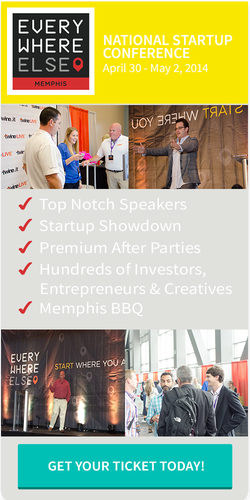 You can’t create a realistic business plan without knowing how much it will cost to get your business up and running. If you don’t have an idea of your startup costs, you won’t know how long you’ll have to bootstrap, how much funding you’ll need, how quickly to scale. In other words, without calculating your startup costs, you don’t really know where you’re going — or how you’re going to get there. And your company could fail before you even hit the break-even point.
You can’t create a realistic business plan without knowing how much it will cost to get your business up and running. If you don’t have an idea of your startup costs, you won’t know how long you’ll have to bootstrap, how much funding you’ll need, how quickly to scale. In other words, without calculating your startup costs, you don’t really know where you’re going — or how you’re going to get there. And your company could fail before you even hit the break-even point.
Some entrepreneurs believe that calculating their costs is all about listing and tallying their cash outlays. This is an essential step, of course, but calculating startup costs is much more than a simple exercise in addition. Equally important is to set some milestones and build your financial plan around hitting these goals.
Here’s how:
#1: Identify your milestones.
To determine the major milestones for your company, you need to assess where you are and where you want to be. You can’t begin to identify your costs until you know what you want to accomplish. What are the important milestones for your company to achieve? Some possible milestones could be to get out a beta product, get a first product, or to gain a solid understand your market. Try to create discrete milestones rather than bundle them together.
#2: Determine what you need to do to accomplish your milestones.
Once you’ve identified your milestones, you need to think about the resources necessary to hit these milestones. Consider the following costs:
- Human resources. This is often the greatest startup expense. Figure out who you will need to build your company, and then calculate their projected salaries and wages (depending on whether you hire employees or outsource). Remember to include recruiting, benefits, taxes, and other related HR costs.
- Operational costs. These are the day-to-day costs of keeping your business running, including such things as your internet service and office supplies, and other inventory and equipment expenses.
- Professional services. You’ll need to include costs for essential professional services, such as an accountant or attorney. Also consider what permits or licenses you may need.
- Facilities. Determine, what, if anything, you will need in terms of facilities or office space.
- Marketing. Your company won’t be very successful if nobody’s heard of it! Consider the cost of marketing materials, your Google AdWords campaign, or other marketing costs.
#3: Consider funding sources.
Next you need to determine if you are going to bootstrap the entity or if you want to/need to/can raise funds. To do this, calculate your burn rate (the amount of capital you will go through every month), using your total expense calculation. If you realize that you will need to raise money to cover your monthly costs, decide what potential funding source you’re going to target: friends and families, angel investors, or venture capitalists.
 #4: Establish your funding goal.
#4: Establish your funding goal.
There are pros and cons to each funding source, but there is no right source for all companies. It depends on your company niche, what stage your company is in, and what else you are looking for — and not looking for — in a funding partner. And, of course, it depends on how much money you need.
You may think more money is better, but this is actually a mistake. Use your expense calculations as a baseline for how much funding you will need. Add in a bit of a cushion, since it’s common for startups to underestimate their cost — but don’t add in too much. Raising what you need (and no more) is called capital efficiency– and it’s a much more telling indicator of your company’s success that your capital access.
#5: Balance your milestones against your funds.
Once you have determined what you need to hit your milestones, you need to go back and balance that against your funds. Balance your way between what you can do and what you can afford in order to reach each milestone. This isn’t a one-time process; you’ll find yourself constantly dancing between these two points.
Admittedly there will be surprises as you launch and grow – that’s why you don’t want to start with a five-year financial plan; it’s just not possible to accurately project that far out. Instead, you just want to calculate your initial costs and create a budget, and update that budget, on a quarterly basis. If you can start with a reasonable estimate of your projected costs, you’ll be better prepared to write your business plan — and positioned to build a successful company.
David Ehrenberg is the founder and CEO of Early Growth Financial Services, a financial services firm providing a complete suite of financial services to companies at every stage of the development process. He’s a financial expert and startup mentor, whose passion is helping businesses focus on what they do best. Follow David @EarlyGrowthFS.
The Young Entrepreneur Council (YEC) is an invite-only organization comprised of the world’s most promising young entrepreneurs. In partnership with Citi, the YEC recently launched #StartupLab, a free virtual mentorship program that helps millions of entrepreneurs start and grow businesses via live video chats, an expert content library and email lessons.














 businesses more comfortable and easier to run. But as a young startup, you have no such luxury! Because it’s important to make every dollar count while your business
businesses more comfortable and easier to run. But as a young startup, you have no such luxury! Because it’s important to make every dollar count while your business


